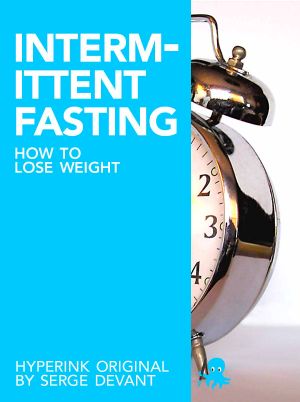How to Lose Weight With Intermittent Fasting (For Immediate Weight Loss and Fat Loss)

- Authors
- Devant, Serge
- Publisher
- Hyperink - Intermittent Fasting Guide and How To
- Date
- 2012-02-24T00:00:00+00:00
- Size
- 0.10 MB
- Lang
- en
ABOUT THE BOOK
People who want to lose weight are frequently confused by the wide range of available diets and exercise regimens. Choosing one that is right for you is difficult because each individual has specific eating habits and lifestyles. Additionally, there are many diets that are simply ineffective, meaning that medical research has not confirmed their utility in weight loss.
Intermittent fasting is similar to caloric restriction, a straightforward diet that involves a reduction of the amount of ingested calories while maintaining proper nutritional value of food to stay healthy. Unlike caloric restriction, however, in intermittent fasting the emphasis is placed on the eating pattern of the individual rather than on reducing the amount of calories of each meal.
EXCERPT FROM THE BOOK
Lean meat is an excellent source of high-quality proteins. Grilled chicken and turkey are great sources of iron, which is a chemical element that is used to produce red blood cells. Red blood cells transport oxygen from the lungs to the tissues, giving you energy. Meat is rich in carnitine, which is a natural compound that is used to transport fat inside the cells to the place where it is burned.
Fish is a great source of proteins and has almost no cholesterol. There is something magically strange about fish fat: it can help you lose weight and lower the risk of heart disease. This is because fish fat contains omega-3 and omega-6 essential fatty acids, which help lower cholesterol levels and increase the metabolism to stimulate the burning of "bad" fat.
Whole-grain foods and cereals are an excellent component of a good intermittent fasting diet due to their specific compounds that help you lose weight naturally. First, whole-grain foods are rich in dietary fiber. Fiber is a natural compound found in plant-derived foods that is not digested and absorbed by the human body. However, even though it has no energetic value, it has a vital role in weight loss, especially when combined with intermittent fasting. Fiber can swell with water in the stomach and gut, which creates a gel-like structure that prevents excessive absorption of fat and cholesterol...
CHAPTER OUTLINE
How to Lose Weight with Intermittent Fasting
+ Introduction
+ How to Use Intermittent Fasting As a Weight Loss Diet
+ Intermittent Fasting is More Effective When You Make Healthy Food Choices
+ The Science of Intermittent Fasting
+ ...and much more
GREAT QUOTES
According to a 2011 study conducted and published by the Department of Kinesiology and Nutrition at the University of Illinois in Chicago, intermittent fasting is more effective than daily caloric restriction when it comes to weight loss. (pg 4)
An important feature of intermittent fasting diet is that is closely resembles the dietary habits of our ancestors, who were hunters and gatherers. Before people started to obtain food through farming, which led to a steady daily supply of food, hunting was the main source of nutrition. (pg 8)
Although intermittent fasting is a safe and effective diet, it may still be perceived by your body as a stressful event, especially in the initial stages. (pg 15)
An increased intake of complex carbohydrates, unlike high amounts of simple sugar, does not lead to production of fat because the slow-release sugar is used instantly by body tissues, preventing excess buildup that is usually transformed into fat. (pg 18)
The result is an enhanced metabolism that will lead to a gradual weight loss, provided you do not eat unhealthy food on your non-fasting days.